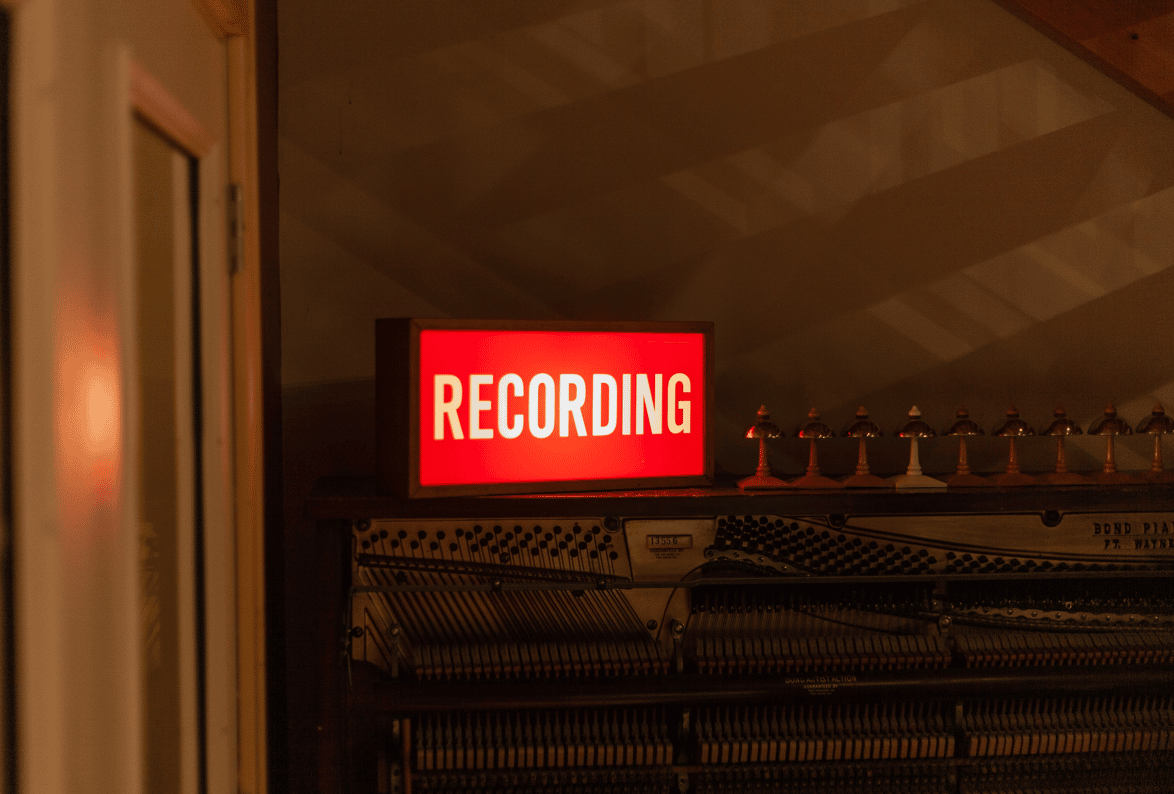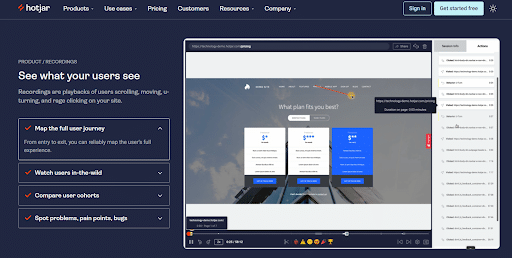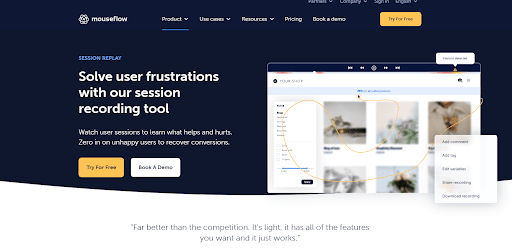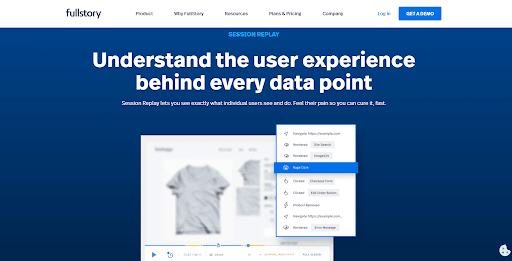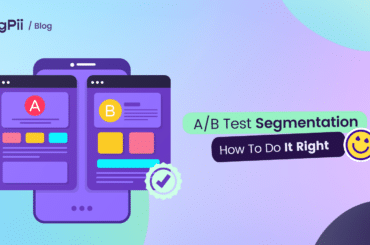Imagine if you could go back in time and watch how every user that visited your website navigated the site, the elements they interacted with, how long they stayed on a page, how far down they scrolled, and whether or not they took a particular action you expected them to take.
That would be a great digital superpower, right?
Because by the time you’re back in the present, you’ll be armed with enough information about the problems users face while using your website and know the best way to solve these problems.
But what if I tell you that it’s possible to have that digital power that allows you to watch how users navigate your website?
In this article, we talk about this digital superpower, which you are most likely familiar with by the name Session Replay or Session Recordings.
What is Session Replay?
A session replay or session recording is a visual compilation of your site’s visitors’ journey during a session on your website.
It includes all their activities and interactions, such as clicks, scrolls, form fills, and other interactions with different elements of your site.

How do you record all these? With a session replay tool.
A session replay tool is a web analytics and user experience visualization tool that allows you to record and watch user sessions on your website to help you understand their behavior and learn about their challenges.
With a session replay tool, you can rewind, fast-forward and pause recorded sessions to fully understand how users interact with your digital products.
Why should you even bother with session replay at all?
If you own an ecommerce website, you are most likely using a lot of analytical tools to understand your customers better and see how you can leverage this knowledge to service them better, right?
While these other analytics tools are focused on giving you quantitative data and answering questions of “how many” or “how much,” session replay will show you the “why” behind these figures.
For example, your typical analytics tool can reveal that the click-through rate on a button on your site is below average, and a session replay tool will show you why the click-through rate is below average.
Businesses often use session replay to reveal user frustrations and other usability issues. Insights from these sessions are then used to improve the overall user experience on the site.
The significant advantage of a session recording over other analytics software is that it shows how customers interact with your site.
How Does Session Replay Work?
So, how exactly does a session replay work?
Session replay tools record data from users’ interactions on your website by accessing browsing sessions. During user sessions, it typically records all changes made to your website’s DOM (Document Object Model).
The DOM is the programming interface for web pages, and it is a representation of all the page elements, including texts, images, and links.
So, as users interact with these elements, the session replay tool on your website records all the changes and puts them into a video format that can be rewatched.
To not confuse you with all the technicalities of how a session replay works, just think about session replay as a type of CCTV that you install on your website to observe visitors’ behavior as they move around the website.
That way, when they face any problems or things are not working as expected, you can see all these in the recorded sessions.
This is how a typical session replay works, and you can see how the user is navigating the website and interacting with different elements of the with.
How do you Analyze Session Recordings To Remove Website Friction?
Analyzing session recordings can be challenging, especially if you have a lot of sessions to watch. It can be challenging to decide how many videos to watch and what to focus on while watching hours-long recorded interactivity.
Although we’ve described session recording as a digital superpower, these recorded sessions are no superhero movies, and there’s always a possibility of sleeping off or getting bored while watching.
How do you analyze and make the most of your session recordings?
Disclaimer: My advice does not guarantee you won’t sleep off or get bored, so here goes.
To make the most out of your session replay, think about the recordings in terms of two things.
- What page or element you’re trying to optimize or improve on your site
- Users groups
For example, if you have a lot of session recordings that focus on your homepage, choose at least ten recordings for the homepage, and for each recording, pick different user groups.
So, it’s like choosing a session that focuses on a specific section of your site or a user problem, and then you’re picking different user groups.
User groups can be chosen based on first-time visits, logged-in, mobile/desktop visitors, and demographic factors such as interests, age, gender, etc.
This way, you’re not just watching the recordings randomly, and you’re more likely to save time while making the most out of the videos that you have.
Most session replay tools allow filtering your recordings using the available filter feature. This filter feature helps you focus on the essential recordings for analysis.
Now that you know how to choose the number of session recordings, let’s talk about the things to remember when analyzing session recordings.
-
Define Goals
Before you dive into hours-long videos of user interactions with your product, always ensure you define what you hope to achieve from the sessions.
Defining goals gives you a laser focus while going through the recording since you already know what you’re looking for.
Not defining goals before watching session recordings means you’ll be watching randomly, which could be a total waste of time.
For example, data from your analytics tool can point to multiple problems on your landing page, resulting in high bounce or low conversion rates. When watching your session recording, your goal could focus on uncovering issues with the landing page.
Having clearly defined goals before delving into the hours of session recording makes the task a little less daunting.
-
Filter Sessions
Defining your goals should make this process easier. Based on the goals you have set for watching session recordings, you should be able to segment and filter the recordings based on criteria such as
- Landing pages
- Pages visited
- Session duration
- Cart abandonments
- Guest users/Previous Users
- Converted Sessions
- Demographics
- Logged-in users
You can choose the different segmentation types or filters depending on the type of website or products and services you offer customers.
Segmenting your session recordings will help you to narrow down and easily find what you’re looking for, which is a step towards your goal.
-
Look out for patterns in user behavior.
When you start watching session recordings, the user behavior might seem random initially, but patterns will likely emerge if you take a closer look and watch more videos.
These emerging patterns will reveal areas of your site that visitors are having problems with and help you understand the thinking behind user behavior.
-
Put your confirmation bias in ghost mode.
Although we recommend looking out for patterns while watching session recordings, it’s easy for your confirmation bias to start painting patterns that are not necessarily there because of certain beliefs you already have.
Another problem confirmation bias can cause is making you dismiss obvious patterns because they do not conform to your ideas of what a “pattern” should be.
While confirmation bias cannot be totally removed, it’ll be best for you if you can prevent it from clouding your judgment. How do you do that?
Get some of your core team members to watch the same session recordings. At the end of the process, everyone comes together to analyze what they observed individually.
If the patterns are similar, everyone likely locked their confirmation biases up while watching the recordings.
Importance of Recording Sessions
-
User Experience and User Interface-Related Problems
When users experience frustrations or challenges when navigating your site, session recordings reveal these issues and let you know how to improve them.
Since session recordings provide the site users’ entire activity while on your site, they can also reveal usability problems.
Additionally, suppose you’re improving your site’s appearance and overall design. In that case, session recordings can be an excellent way for your designers to learn about problems with the previous design and know how to make new ones better for users.
-
Improves Customer Support
Asking a frustrated customer to explain a problem they faced in detail can be pretty frustrating for the customer. However, a session replay can provide you with the problem they faced and the context, which allows you to understand them better and figure out how to help them.
Your analytics tool will provide data on how many users converted and didn’t make it to the checkout stage. Just numbers, no reason why, which leaves you to start making guesses or projections.
However, with session recordings, you have access to first-hand information about why your conversion is dropping. You can see the sections and elements of your website that are making the conversion process difficult for your users.
-
Bugs and Errors
Session recording can also help you identify bugs and errors on your website. Common errors such as internal errors, page not found, and other site-related problems can be uncovered.
Apart from page errors, common bugs such as browser incompatibility and crashes caused by broken link clicks can also be revealed with session recording.
-
Provides context for user frustrations
This is one of the most significant importance of session replays and its major advantage over analytics tools. It provides hardcore evidence that explains the why(s) behind your numbers.
Session replays show you the problem and other important information that will enable you to understand the problem adequately. This is particularly useful for customer support teams.
If a picture is worth a thousand words, you can imagine how much more a video will be worth.
How do session replay tools integrate with Analytics tools?
Analytics tools are excellent for gathering quantitative data and answering questions about how many and how much, but never the question “why.” Some web data analytics tools focus on numerical data, as they only provide numbers.
Session replays focus on understanding user behavior while interacting with your site and help you understand why they do what they do.
Integrating session replay tools which provide user behavior analytics with other web analytics tools, can give more meaning to the overall insights you gather on your website.
For example, your analytics tool shows you how many users click on a button or interact with an element on your website. Your session replay shows how and why the users are clicking or not clicking on the button.
Data analytics and insights show you that there’s a problem, but session replay helps you understand how to fix the problem.
Best Session Replay Tools
Choosing a session replay tool can be challenging, considering that there are a lot of tools out there, with most tools offering similar sets of features. It’s important to choose.
To help you make the best choice, here are some essential factors to consider when choosing a session replay tool.
-
Compatibility
When choosing a session recording tool, compatibility with other technological tools already available on your website is important. Cross-device compatibility is also important if you want to include session recording from both mobile and desktop devices.
-
Sessions Recorded
Some tools can record all the user activity during a session, while other tools record some and not all the parts of a session. If you aim to get a comprehensive detail of user activity, then you would want to choose tools to achieve your objectives.
-
Storage and Data Retention
When choosing a session recording tool, you should also consider the storage and data retention capacity that meets your needs.
Most session replay tools can only store the recorded session for a limited period before they are cleared to create space for other recordings. Also, depending on your plan, the number of sessions you can record in a month is also limited.
-
Impact on Site Performance
Even though most session replay tools boast that they have little to no impact on your site’s performance, that is not entirely true. The technology behind the tool and the one your site runs on will determine the level of impact. So, you only want to choose a tool that does not have too much impact on your site.
-
Search and Segmentation
Imagine having to manually search through 1000 recordings before finding what you want. We recommend choosing tools that allow you to search through and filter session recordings using different criteria to save time.
After carefully considering some of the criteria listed above, these are some of the best session replay tools available for ecommerce
FigPii

FigPii is an A/B testing platform businesses, especially ecommerce sites, use to analyze and improve their website and ultimately increase their conversion rate.
FigPii’s session replay tool records every visitor’s click, each mouse movement, each pause, and each page navigation.
It lets you record visitors on a specific page of your website, visitors coming from a particular source, and offers up to 16 different filtering options for segregating your recorded sessions.
FigPii has a unique feature that allows session recordings to integrate with its AB testing engine, which means you can watch sessions from each variation of your site when performing A/B tests.
Hotjar
Hotjar is a web analytics and user experience tool that enables you to monitor user behavior on your website. It provides actionable insights that can positively impact your decision-making when improving your website.
Hotjar’s session recording software shows user interaction with each page of your website by showing you their clicks, keyboard strokes, and scrolls. It also provides the option of letting you compare the page activities of different user groups.
Mouseflow
Mouseflow is another analytics tool that allows you to track user behavior on your website by tracking mouse movements, clicks, and scroll patterns.
Mouseflow has one of the advanced session replay tools because it has a Friction Score that shows the frustration levels of users interacting with specific pages of your website.
Mouseflow also offers filters that you can use to group your session recordings. Filters include entry page, exit page, device, operating system, length of visit, etc. This lets you make the most of your recording by focusing on specific problems.
FullStory
Fullstory is web analytics and customer experience software that captures customer experience with a product. It combines site analytics, session recording, and other tools to help deliver actionable insights that can help you understand your customers better.
Fullstory session replay helps you understand your site’s user experience and frustrations so that you can resolve them effectively.
CrazyEgg
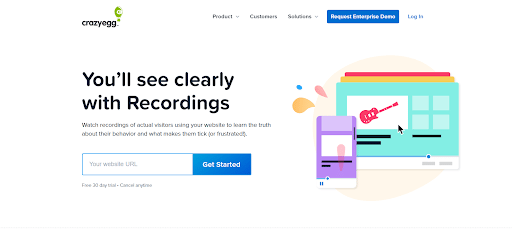
CrazyEgg is a conversion rate optimization tool that offers session replay as one of its features. Its session replay allows you to record your visitors’ sessions to have an idea of their journey and interaction with your website.
CrazyEgg offers some filtering options for session replays, allowing you to group session replays based on visited pages, time spent on a page, etc. The only downside to this tool is that it doesn’t support mobile applications.

